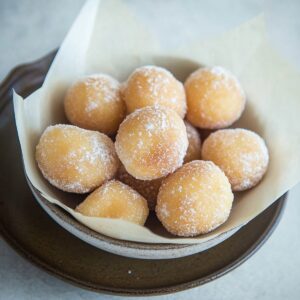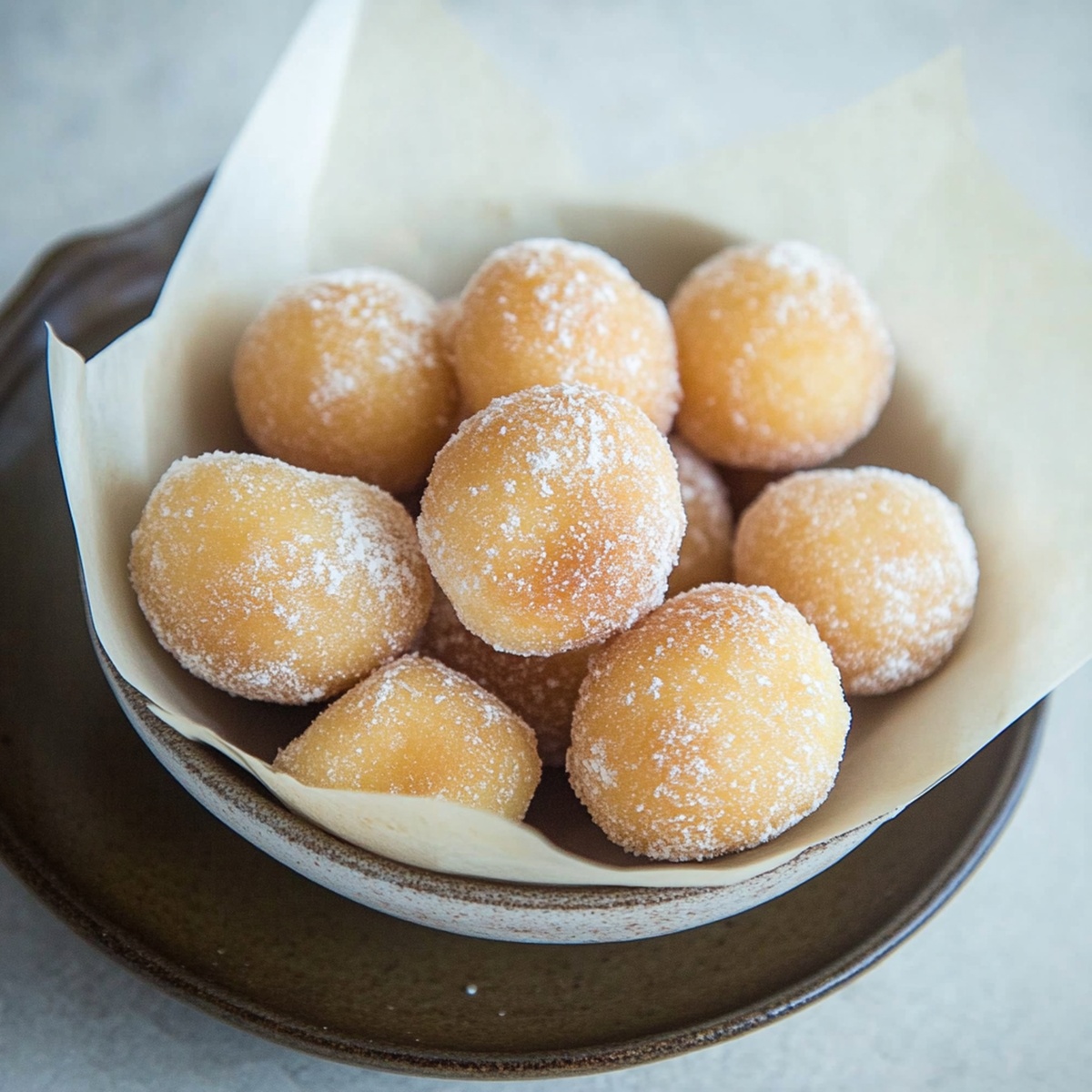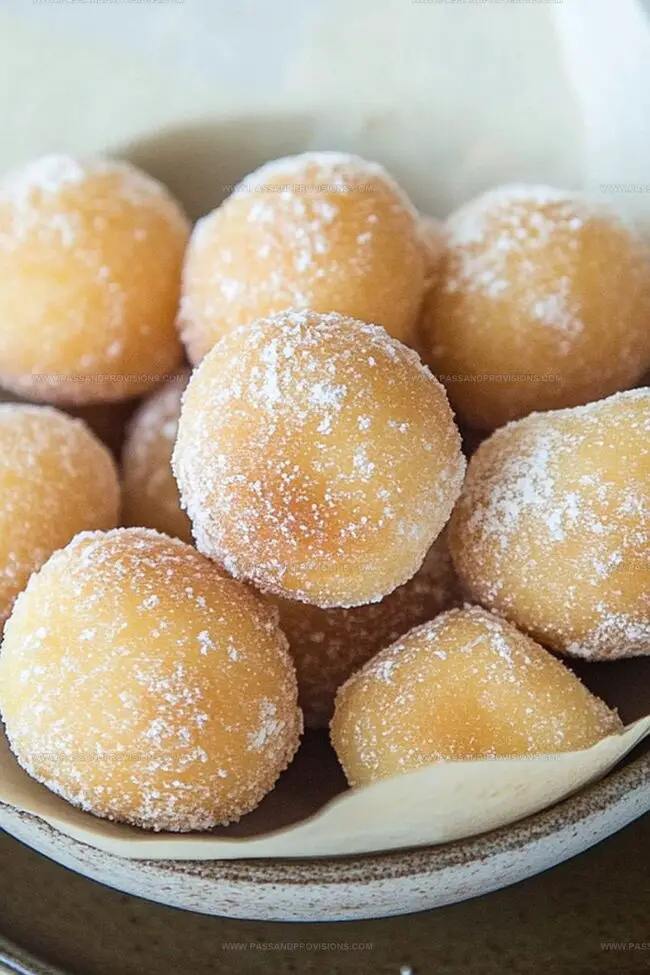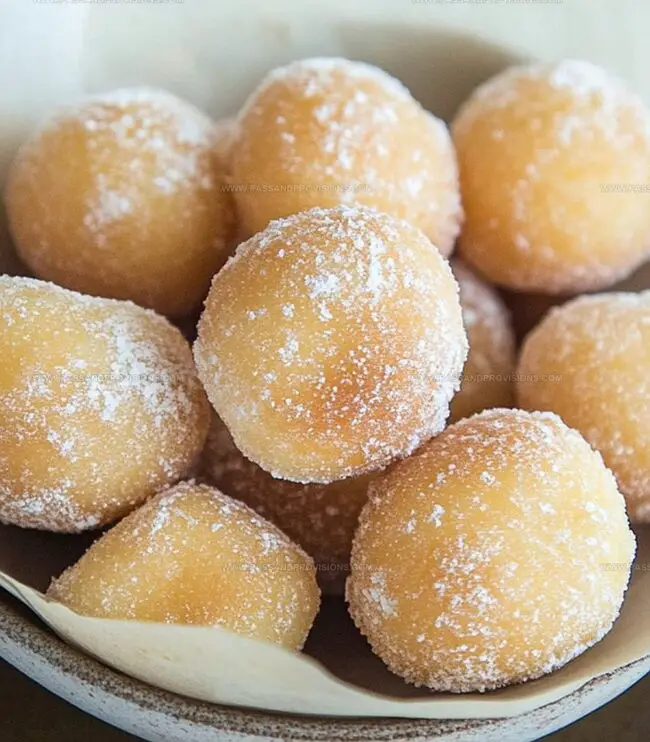Golden Malasadas: The Crispiest Portuguese Doughnut Recipe
Sweet and pillowy, these Portuguese malasadas dance with golden crispy perfection in every delightful bite.
Portuguese street food culture inspired this beloved malasadas recipe that brings authentic flavor straight to your kitchen.
Soft dough bubbles with yeasted potential, promising a delectable treat that melts in your mouth.
Sugar-dusted edges glisten with tempting warmth, beckoning you to savor each heavenly morsel.
The traditional Portuguese pastry transforms simple ingredients into an irresistible dessert that connects generations of culinary tradition.
Vibrant and light, these doughnuts offer a taste of coastal Portugal’s rich street food heritage.
You’ll want to share these golden delights with everyone around the table.
Quick Recipe Overview
Ingredients That Make Portuguese Doughnuts (Malasadas) Magical
For Base Ingredients:For Liquid Activation:For Moisture and Flavor:For Finishing:Equipment to Fry Up Authentic Portuguese Malasadas
Easy Steps to Prepare Portuguese Doughnuts (Malasadas)
Sprinkle yeast into warm water and let it bubble and wake up for a few minutes until it looks frothy and alive.
Mix flour, sugar, and salt together in a big mixing bowl, creating a soft, powdery foundation for your doughnuts.
Combine warm milk, melted butter, eggs, and vanilla in another bowl, whisking them into a silky, fragrant mixture.
Pour the yeast into the wet ingredients, then slowly fold into the flour mixture. Knead the dough until it becomes smooth and stretchy, using a mixer or your hands.
Place the dough in a greased bowl, cover it, and let it rest and grow for about two hours until it doubles in size.
Punch down the dough and roll it into small round balls. Let them rise again for another 30-45 minutes.
Heat oil to 350F and carefully drop the dough balls into the hot oil. Fry until they turn a beautiful golden brown, about 1-2 minutes per side.
Drain the doughnuts on paper towels, then roll them in sugar while still warm. Add cinnamon if you want extra flavor.
Tips and Sweet Variations for Malasadas You’ll Love
How to Serve Up Portuguese Doughnuts (Malasadas)
How to Keep Portuguese Doughnuts Fresh and Fluffy
Print
Crispy Portuguese Doughnuts (Malasadas) Recipe
- Total Time: 30 minutes
- Yield: 13 1x
Description
Sweet Portuguese malasadas tempt dessert enthusiasts with crispy exterior and tender center. Pillowy dough dusted with sugar invites warm memories of Lisbon’s charming bakeries, drawing friends and family close around shared delights.
Ingredients
- 4 cups all-purpose flour
- 3 large eggs
- ¾ cup whole milk, warmed (180 ml)
- 2 ¼ tsps (1 packet) active dry yeast
- ¼ cup warm water (110°F / 43°C) (60 ml)
- ¼ cup unsalted butter, melted (60 g)
- 4 cups vegetable oil (for frying) (960 ml)
- 1 tsp vanilla extract
- ⅓ cup granulated sugar (67 g)
- ½ tsp salt
- 1 cup granulated sugar (for coating) (200 g)
- 1 tsp ground cinnamon (optional)
Instructions
- Yeast Activation: Blend yeast with warm water, allowing the mixture to transform into a frothy, bubbly concoction within 5-10 minutes.
- Dry Ingredient Preparation: Whisk flour, sugar, and salt together in a substantial mixing bowl, creating a uniform dry foundation.
- Liquid Component Fusion: Thoroughly combine warm milk, melted butter, eggs, and vanilla extract into a seamless liquid mixture.
- Dough Formation: Merge the activated yeast solution with liquid ingredients, then gradually fold into the flour mixture, creating a cohesive dough through gentle integration.
- Dough Development: Knead the mixture energetically using hands or a stand mixer with a dough hook until achieving a silky, elastic consistency, approximately 8-10 minutes.
- First Fermentation: Transfer dough to a lightly greased bowl, cover with a clean towel, and let rise in a warm environment until volume doubles (1.5-2 hours).
- Portioning and Second Rise: Gently deflate the dough, divide into uniform portions, arrange on a floured surface, and allow a secondary rise for 30-45 minutes.
- Frying Preparation: Heat culinary oil in a deep fryer or large pot to 350°F (175°C), ensuring optimal frying conditions.
- Cooking Process: Carefully submerge dough portions in hot oil, frying in small batches until achieving a golden-brown exterior (1-2 minutes per side).
- Final Touches: Transfer fried malasadas to paper towels to drain excess oil, then generously coat with granulated sugar and optional ground cinnamon while still warm.
- Serving Suggestion: Present immediately or consider filling with custard or jam for an enhanced culinary experience.
Notes
- Yeast Activation Precision: Ensure water temperature is between 100-110°F to activate yeast without killing it, creating the perfect frothy base.
- Dough Kneading Technique: Knead consistently until dough becomes smooth and elastic, indicating proper gluten development for light, airy texture.
- Oil Temperature Control: Maintain exact 350°F during frying; use a thermometer to prevent soggy or burnt doughnuts and ensure even golden-brown coloring.
- Sugar Coating Timing: Roll doughnuts in sugar immediately after frying while still warm to help sugar adhere perfectly and create a delightful crispy exterior.
- Prep Time: 15 minutes
- Cook Time: 15 minutes
- Category: Breakfast, Snacks, Desserts
- Method: Frying
- Cuisine: Portuguese
Nutrition
- Serving Size: 13
- Calories: 330
- Sugar: 26 g
- Sodium: 90 mg
- Fat: 18 g
- Saturated Fat: 9 g
- Unsaturated Fat: 7 g
- Trans Fat: 0 g
- Carbohydrates: 37 g
- Fiber: 1 g
- Protein: 4 g
- Cholesterol: 70 mg




William Hawkins
Founder & Culinary Director
Expertise
Education
Sullivan University, Louisville, KY
William Hawkins isn’t just a chef, he’s a storyteller through food. From his hometown of Louisville, KY, he’s spent years refining his craft, turning local ingredients into something extraordinary.
With classical training from Sullivan University and a career marked by innovation, mentorship, and Southern soul, William approaches every recipe with purpose. His kitchen is where old techniques meet fresh ideas, and where comfort food gets a thoughtful, modern twist.
When he’s not building dishes from the ground up, he’s out gathering inspiration from nature, markets, and the stories people share around the table.